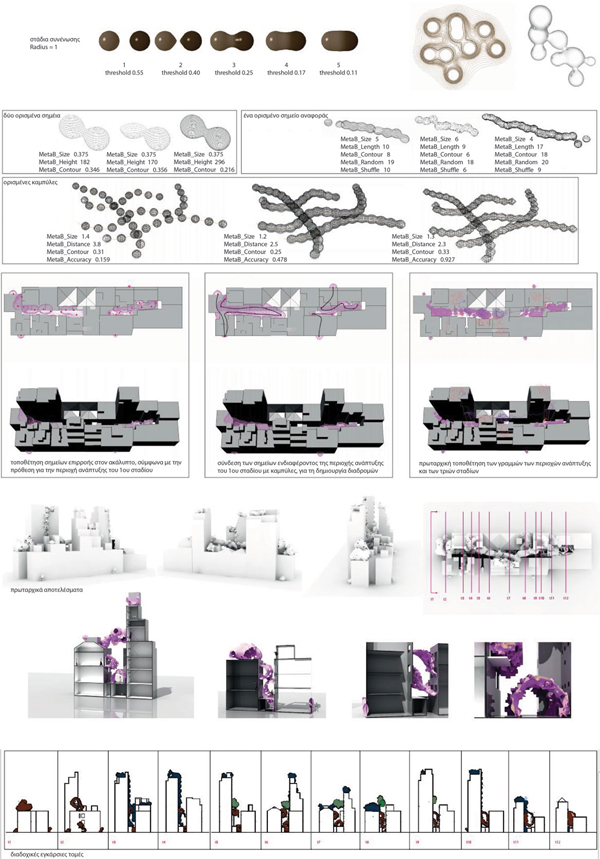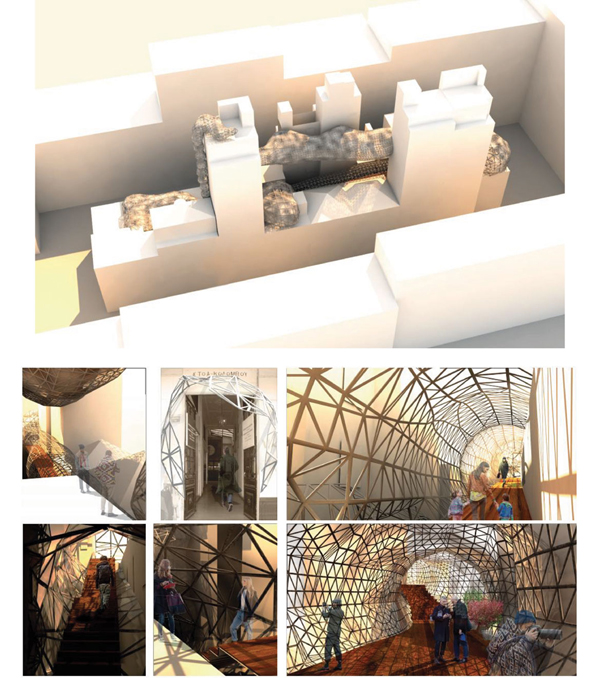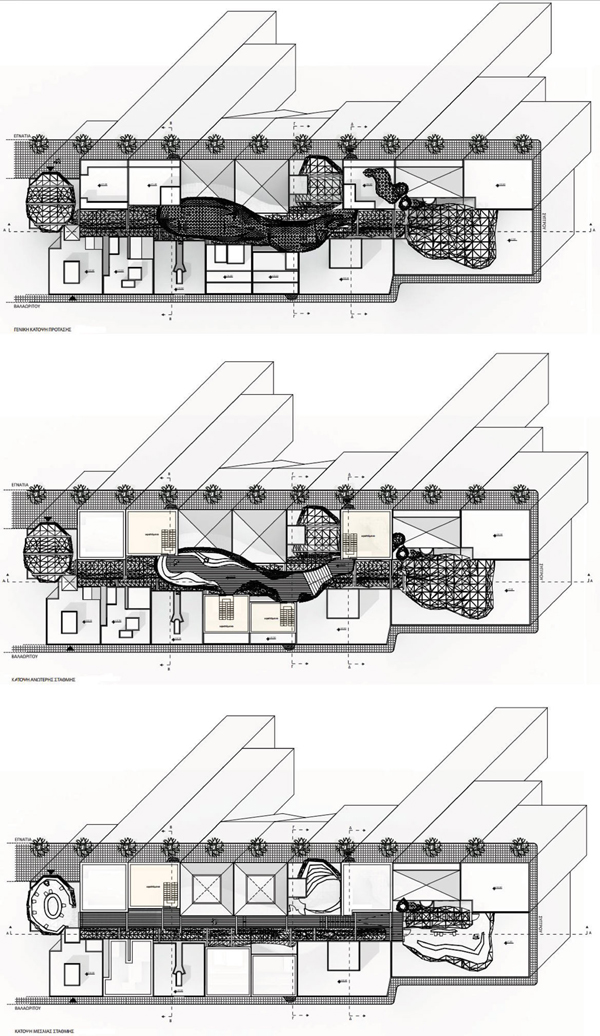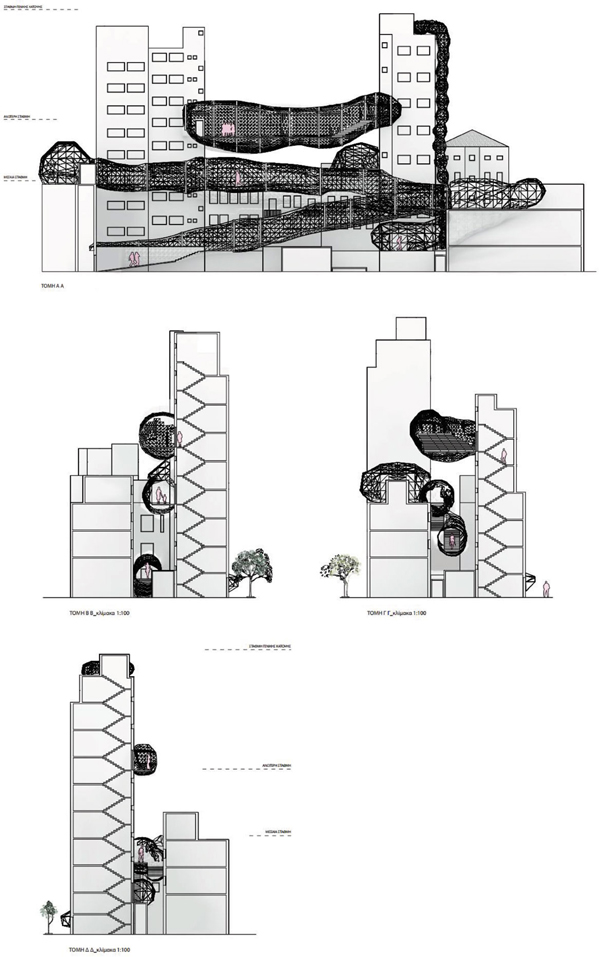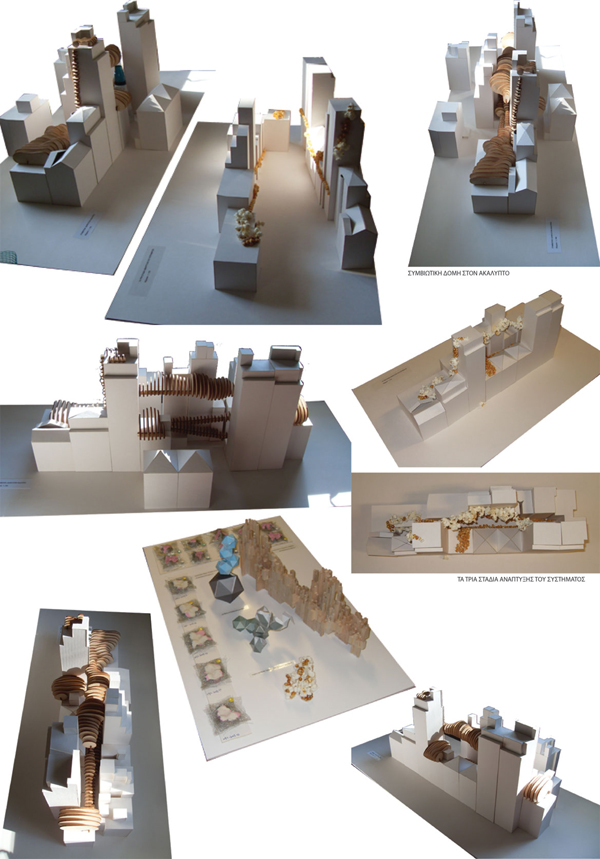STUDENTS PROJECTS
PROJECTS2013
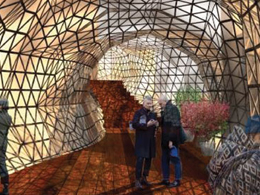
23 March, 2014
Symbiotic relationships in the space of the unbuilt
The implementation of a symbiotic system in the urban block.
Student: Boutsivari Elena
Date of Presentation: 21-02-2013
Supervisor: Voyatzaki Maria
Aristotle University of Thessaloniki, Faculty of Engineering, School of Architecture
This thesis is an experimental approach to an intervention in space that seeks to create a system with features of partial autonomy, which has individuality and is also partially closed, though maintains the communication with the exterior. The theme of this intervention is linked to the case of open spaces.
In my research paper I worked on a concept of theoretical biology, Autopoiesis, and tried to locate correlations with the architectural concept. The research I did was the reason which triggered my design thesis theme, a system that has characteristics of partial autonomy and individuality, and is also a partially closed system that however maintains communication with the exterior. This thesis is an experimental approach aiming at an intervention in space that seeks to create a system with similar characteristics.
I decided to link the theme of this intervention with the case of open spaces. The largest number of building blocks' open spaces today, in middle-class Greek city, is a set of neglected and unexploited areas enclosed by the backs of buildings blocks. As shown in the map below, one observes a fading of how much activity there is at the unbuilt space from outside to inside, from the streets, sidewalks, locations to stop and overdrafts. In parallel, there has been a weakening of privacy from the inside out, meaning that an inaccessible space is more private than the visitable buildings, and they are more private than the public external space. A relationship was found concerning the interpenetration between these two situations, how active and how private a place is, which means that the more a place is used, the less privacy characterizes it. Thus the intent was formed, which is the revival of the unbuilt through the new distribution and new management of this relationship.
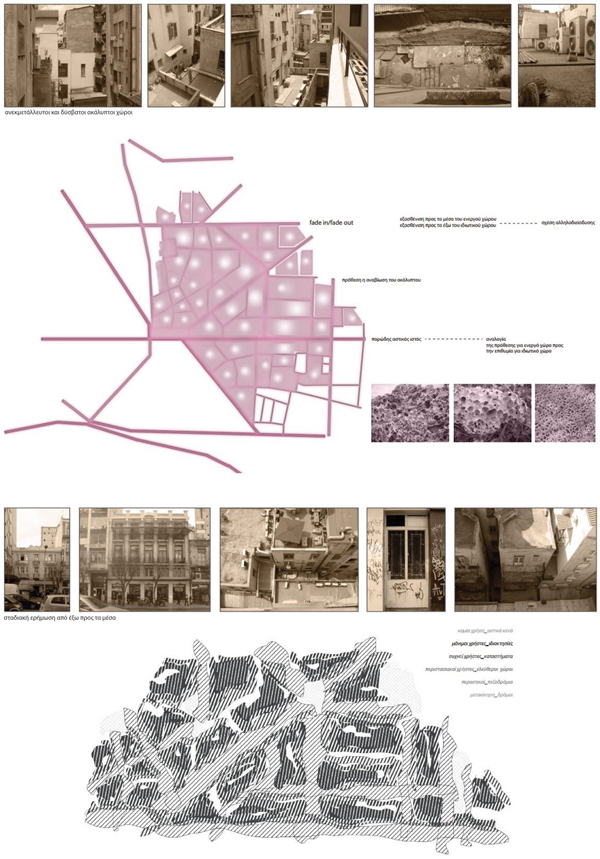
To select the location there were no particular restrictions. I was interested to intervene to a typical building block's open space, enclosed and inaccessible, bringing together a variety of uses and users in the surrounding buildings and in the most often disadvantaged state in terms of space and situation. The chosen block is between Egnatia and Balaoritou, located in the center of Thessaloniki. It combines a variety of uses, it has life around the clock and high traffic. All movements are being done around, leaving the interior intact and undeveloped.
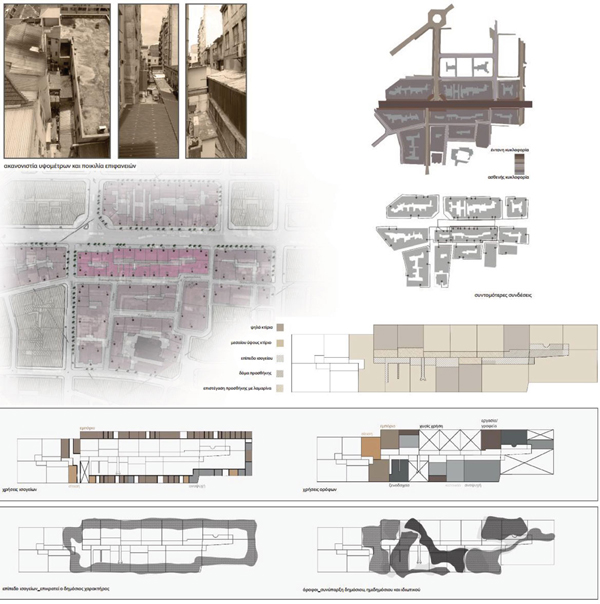
The block is treated as the existing basis, as the autonomous perimeter network with relations of labor, neighborhood and leisure, an open space with perimeter information in height, which will host a new geography formed by a new entrant network of relations. Having the basis of information for granted, maquettes were made and experiments were performed. Then, the space was treated as a container for receiving a foreign element, and this in turn was adapted to surfaces and developed an expansive behavior. The first attempt for the spatial output of this foreign element was by using units, which follow an evolutionary process. Either they lead to acne or they dissolve, depending on the capabilities of the existing space. They are being multiplied and distorted to create a space or a connection between spaces.
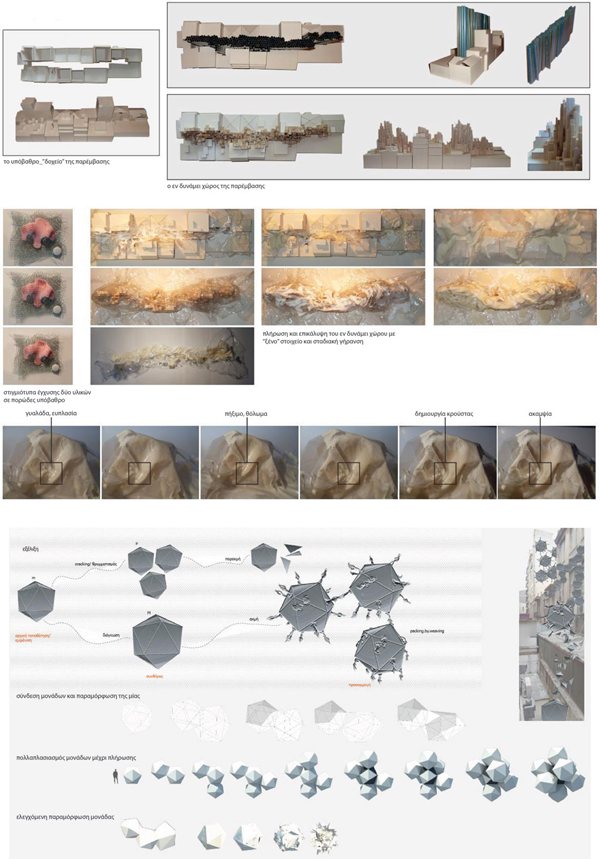
Returning to the city and the large scale and identifying the open spaces, one observes that they show no uniformity and it is obvious that they emerged as residues of unstructured areas of each property. If isolated, they look like totally alien elements, like parasites within the city and the regularity that characterizes the urban network. From these, the idea of the parasite emerged, the idea of creating a system that parasites on given basis.
However parasitism is a subcategory. The dominant theme is the symbiosis. The word 'symbiosis' means living together and refers to organisms that live and grow in close relationship with each other.
There are three types of symbiosis. The first is parasitism, the parasite benefits from its presence over the host while the host is burdened. The second is the commensalism in which one species benefits while the other neither benefits nor bear. The third type is mutualism in which both species benefit from this relationship.
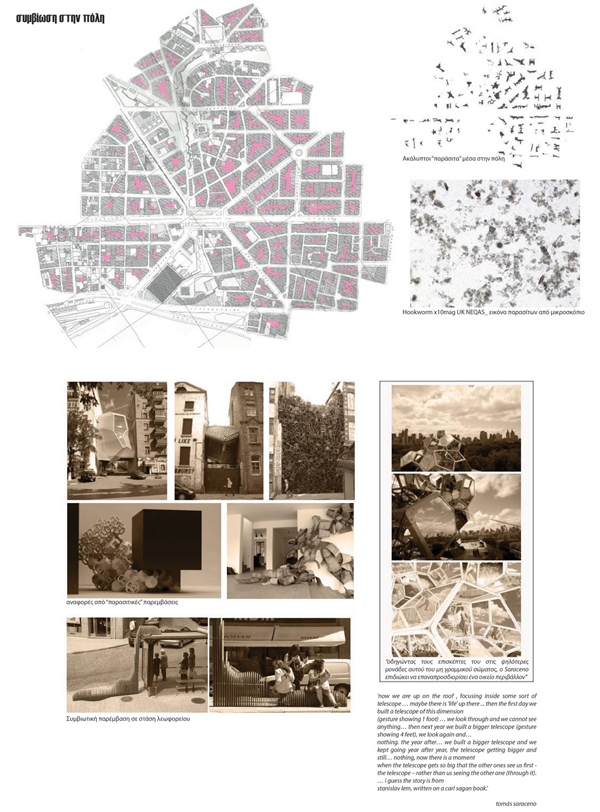
The idea of symbiosis is organized so as to develop a new system as a "parasite" on the existing network in order to re-establish the relationship of activity in the area with privacy of space. It must meet requirements of accessibility, capacity and privacy. The lower level is more public and attractive to invite guests, and upper levels vary in capacity and privacy, depending on the area with which they neighbor.
The three types of symbiosis are treated as three scenarios for the management of space, or as a three-stage evolution of the system, by covering the desire to turn the building block's open space useable. This means that the system is organized to offer qualities and capabilities through a set of connections and sites.
The first phase is commensalism and is it translated as the first step to enter the unbuilt space and acquire memory and experience. The next stage is the mutual relationship of the new system with its environment and it is translated as a walk that attracts more visitors and is linked with rainwater harvesting facilities, fueling the existing buildings.
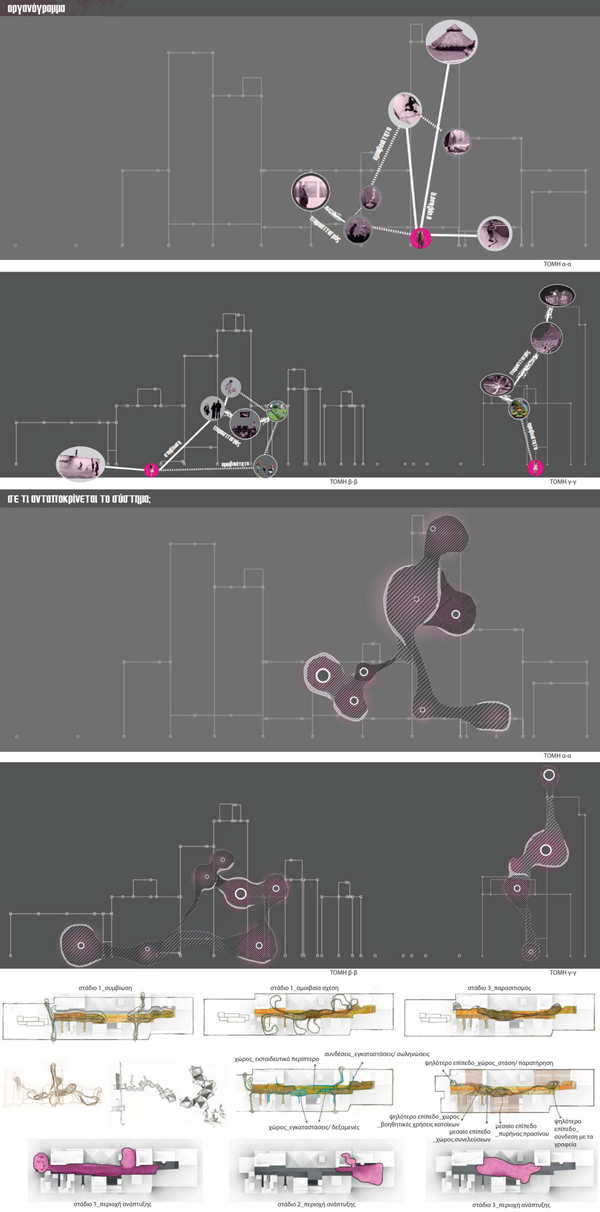
For spatial expression, testing and implementation of this program in the unbuilt space I looked for a means to facilitate me in order to handle this whole organization. I made use of a tool, the metaballs. The attribute that has the particular tool is to recognize given points in space, to form an influence area around them, and depending on the distance between those points, it tends to unite these areas organically.
The procedure I followed was to define lines in the areas that I wanted each phase to develop. I applied this tool and by testing I tried to make characteristics of each stage obvious to select and isolate a satisfying result for later processing.
